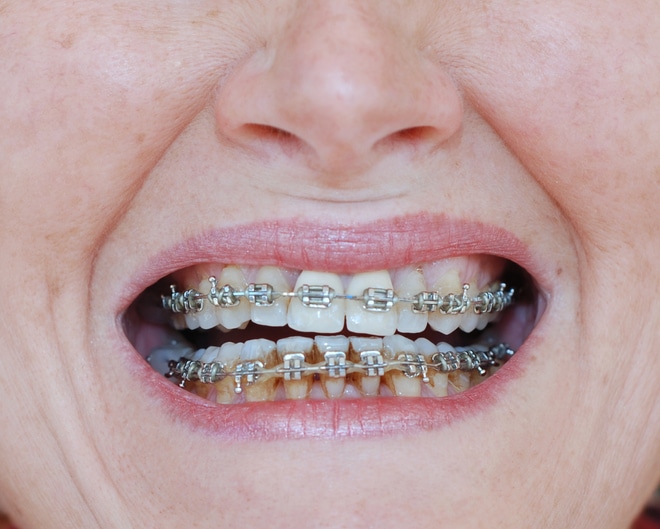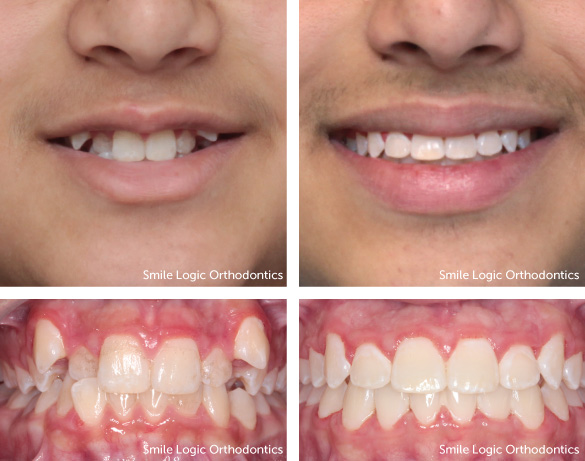7 Teeth Staining Fixes After Braces

The excitement of finally getting your braces off is often quickly followed by the disappointment of discovering that your teeth are stained. This is a common issue for many people who have worn braces, as the brackets and wires can make it difficult to clean your teeth properly, leading to a buildup of plaque and stains. However, there’s no need to worry – there are several effective ways to fix teeth staining after braces.
One of the primary causes of teeth staining after braces is the poor oral hygiene that can occur during the orthodontic treatment. Food particles and plaque can accumulate around the brackets and wires, leading to the formation of stains. Additionally, the constant pressure and friction from the braces can cause the teeth to become discolored. Fortunately, most of these stains can be removed with professional dental cleaning and whitening treatments.
For those who are looking for a more comprehensive solution, a thorough dental cleaning is often the first step in addressing teeth staining after braces. This procedure involves the removal of plaque, tartar, and stains from the surface of the teeth, both above and below the gum line. A dental hygienist will use specialized tools to gently scrape away the buildup, revealing cleaner, smoother teeth. In many cases, this alone can significantly improve the appearance of the teeth.
In addition to professional cleaning, there are several at-home remedies that can help to fix teeth staining after braces. One of the most effective is oil pulling, an ancient practice that involves swishing oil around in the mouth to remove bacteria and stains. Simply take a tablespoon of coconut or sesame oil and swish it around in your mouth for several minutes before spitting it out. This can help to loosen and remove stains, leaving your teeth looking cleaner and brighter.
Another option for fixing teeth staining after braces is teeth whitening. There are several different types of teeth whitening treatments available, including in-office whitening, at-home whitening kits, and over-the-counter whitening strips. These treatments use mild bleaching agents to remove surface stains and discoloration from the teeth, leaving them looking whiter and brighter. It’s essential to consult with a dentist before undergoing any teeth whitening treatment, as they can help you determine the best course of treatment for your specific needs.
For more severe staining, a process called microabrasion may be necessary. This involves the use of a mild abrasive to gently remove surface stains and discoloration from the teeth. The procedure is typically performed in a dentist’s office and can be highly effective in removing stubborn stains. In some cases, microabrasion may be combined with teeth whitening for even more dramatic results.
In some instances, teeth staining after braces may be more extensive and require more invasive treatments. For example, if the stains are deep-set or have penetrated the enamel, a procedure called dental bonding may be necessary. This involves the application of a tooth-colored resin to the affected area, which is then hardened and polished to match the surrounding teeth. Dental bonding can be highly effective in covering up stains and discoloration, but it may require more frequent maintenance than other treatments.
Lastly, it’s crucial to maintain good oral hygiene habits after getting your braces off to prevent future staining. This includes brushing your teeth at least twice a day with a fluoride toothpaste, flossing once a day, and visiting your dentist regularly for check-ups and cleanings. By taking these steps, you can help to keep your teeth clean, healthy, and stain-free for years to come.
How long does it take to remove teeth stains after braces?
+The time it takes to remove teeth stains after braces can vary depending on the severity of the stains and the treatment methods used. Professional dental cleanings and whitening treatments can typically be completed in a single visit, while at-home remedies may take several weeks or months to produce noticeable results.
Are teeth stains after braces permanent?
+Most teeth stains after braces are not permanent and can be removed with professional dental cleaning and whitening treatments. However, in some cases, stains may be more deep-set or stubborn, requiring more invasive treatments like microabrasion or dental bonding.
Can I prevent teeth staining after braces?
+Yes, there are several steps you can take to help prevent teeth staining after braces. These include maintaining good oral hygiene habits, such as brushing and flossing regularly, and visiting your dentist for regular check-ups and cleanings. Additionally, avoiding foods and drinks that can stain teeth, such as coffee and berries, can help to minimize the risk of staining.
How much do teeth staining treatments cost?
+The cost of teeth staining treatments can vary widely depending on the type and severity of the stains, as well as the treatment methods used. Professional dental cleanings and whitening treatments can range from $100 to $1,000 or more, while at-home remedies like oil pulling and whitening strips are typically much less expensive.
Are there any risks or side effects associated with teeth staining treatments?
+As with any dental treatment, there are some risks and side effects associated with teeth staining treatments. These can include tooth sensitivity, gum irritation, and allergic reactions to certain materials or products. However, these risks can be minimized by consulting with a qualified dentist and following their recommended treatment plan.
It's essential to note that not all teeth stains after braces can be completely removed. In some cases, the stains may be too deep-seated or severe, requiring more extensive treatments like dental bonding or veneers. However, with the right combination of professional dental cleanings, whitening treatments, and at-home remedies, most people can achieve significant improvements in the appearance of their teeth.
To summarize, there are several effective ways to fix teeth staining after braces, including professional dental cleanings, teeth whitening, microabrasion, and dental bonding. By maintaining good oral hygiene habits and consulting with a qualified dentist, you can help to prevent future staining and keep your teeth clean, healthy, and looking their best.
| Pros | Cons |
|---|---|
| Professional dental cleanings can be highly effective in removing surface stains | May not be suitable for deep-seated or severe stains |
| Teeth whitening can produce dramatic results in a short amount of time | Can be expensive and may require multiple treatments |
| Microabrasion can be highly effective in removing stubborn stains | May require multiple sessions and can be uncomfortable |
| Dental bonding can provide a long-term solution for stained teeth | Can be expensive and may require extensive preparation |

In conclusion, teeth staining after braces is a common issue, but it’s not a permanent problem. By understanding the causes of staining and exploring the various treatment options available, you can take the first step towards achieving a brighter, healthier smile. Whether you choose professional dental cleanings, teeth whitening, microabrasion, or dental bonding, it’s essential to consult with a qualified dentist to determine the best course of treatment for your specific needs. With the right combination of treatments and good oral hygiene habits, you can help to prevent future staining and keep your teeth looking their best for years to come.
